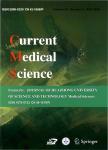Analysis on Antimicrobial Resistance of Clinical Bacteria Isolated from County Hospitals and a Teaching Hospital
Analysis on Antimicrobial Resistance of Clinical Bacteria Isolated from County Hospitals and a Teaching Hospital作者机构:Department of Laboratory Tongji Hospital Tongji Medical College Huazhong University of Science and Technology Wuhan 430030 China National Institute for the Control of Pharmaceutical and Biological Products Beijing 100050 China
出 版 物:《Journal of Huazhong University of Science and Technology(Medical Sciences)》 (华中科技大学学报(医学英德文版))
年 卷 期:2006年第26卷第3期
页 面:386-388页
学科分类:12[管理学] 1204[管理学-公共管理] 120402[管理学-社会医学与卫生事业管理(可授管理学、医学学位)] 1004[医学-公共卫生与预防医学(可授医学、理学学位)] 10[医学]
主 题:bacteria antimicrobial susceptibility tests antimicrobial resistance
摘 要:The distinction of antimicrobial resistance of clinical bacteria isolated from county hospitals and a teaching hospital was investigated. Disc diffusion test was used to study the antimicrobial resistance of isolates collected from county hospitals and a teaching hospital. The data was analyzed by WHONET5 and SPSS statistic software. A total of 655 strains and 1682 strains were collected from county hospitals and a teaching hospital, respectively, in the year of 2003. The top ten pathogens were Coagulase negative staphylococci (CNS), E. coil, Klebsiella spp. , S. areus, P. aeruginosa, Enterococcus spp. , Enterobacter spp. , otherwise Salmonella spp. , Proteus spp. , Shigella spp. in county hospitals and Streptococcus spp. , Acinetobacter spp. , X. maltophilia in the teaching hospital. The prevalence of multi-drug resistant bacteria was 5 % (4/86) of methicillin-resistant S. areus (MRSA), 12 % (16/133) and 15.8 % (9/57) of extended-spectrum β-lactamases producing strains of E. coil and Klebsiella spp. , respectively, in county hospitals. All of the three rates were lower than that in the teaching hospital and the difference was statistically significant (P〈0. 01). However, the incidence of methicillin-resistant CNS (MRCNS) reached to 70 % (109/156) in the two classes of hospitals. Generally, the antimicrobial resistant rates in the county hospitals were lower than those in the teaching hospital, except the resistant rates of ciprofloxacin, erythromycin, clindamycin, SMZco which were similar in the two classes of hospitals. There were differences between county hospitals and the teaching hospital in the distribution of clinical isolates and prevalence of antimicrobial resistance. It was the basis of rational use of antimicrobial agents to monitor antimicrobial resistance by each hospital.



